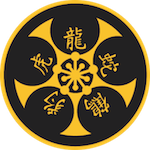Seminar on Wing Chun Concepts
Vital Targets and Nerve Clusters
Thanks to all of you who attended the seminar! Here follows a review of the vital targets and nerve clusters I went over.
My preferred approach of defending oneself, and the one I teach my students is: the best defense is to not be there. This applies to both before an altercation takes place or during. During, it's a Biu Tze concept known as circumventing. Wing Chun is largely based on principals of water: if water has an avenue of release it will naturally take it. If no avenue is available because either your back is to a wall or you have a loved one that needs defending then attack with all necessary ferocity.
In all self defense situations the first thing to consider is assessing the level of threat an assailant poses. For various reasons, never assume a combat stance unless the fight has begun. Once you've assumed a combat stance de-escalating a situation through words becomes nearly impossible. Also you telegraph that you know some form of self defense, which is an edge you ought to keep hidden. Surprising your attacker is psychological combat, which is an excellent weapon in your arsenal.
Unless one is at war or the assailant is threatening your life then dealing a death blow, maiming or mutilating is simply unacceptable, as a human, morally or legally.
I'd like to dispel a couple myths.
- It is not possible to cause death by using the shards of a broken nose to thrust into the brain. There is no channel from the nose through which to access the brain.
- The temporal bone or the temple area of the skull is not the thickness of an egg shell, although it is the thinnest of the skull bones. The reason for it being a good target is that the bone is flat, unlike the rest of the 21 bones of the skull which are curved, thus it does not dissipate the force of a blow.
I'll divide the body into three sections: high, middle, and low. Each of the sections contain vital targets, those that can easily result in death, as well as debilitating targets.
High Section: Head and neck; this is the section consisting of the most vital targets.
Temple. The bones here are flat which means that a blow to this area will not be dissipated by the curvature as in other areas of the skull. It has an artery and large nerve that lie close to the skin. A powerful blow can cause unconsciousness and brain concussion. If the artery is ruptured, the resulting hemorrhage can cause coma and or death.
Forehead. A forceful palm-strike can cause whiplash; a severe blow can cause cerebral hemorrhage or breaking of the neck, both of which can lead to death.
The complete list is available to my students upon request.
